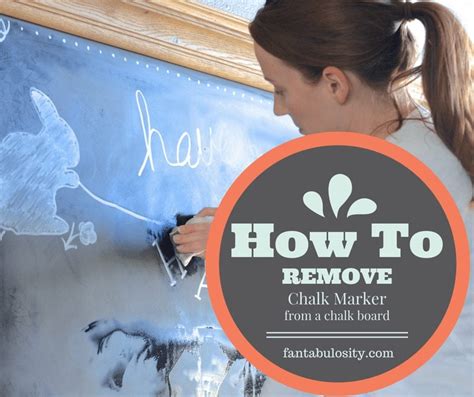Chalk Marker Removal: Beyond the Basics
Chalk markers, with their vibrant colors and ease of use, are a popular choice for everything from menu boards and signage to crafting and artistic projects. But what happens when you need to remove those vibrant marks? Simply wiping them away isn't always enough, and using the wrong method can lead to smudging, staining, or even damage to the surface. This guide goes beyond the basics, exploring various removal techniques depending on the surface and the type of chalk marker used.
What Type of Chalk Marker Are You Dealing With?
Before diving into removal methods, it's crucial to identify the type of chalk marker you're using. There's a significant difference between water-based and oil-based chalk markers, and this difference dictates the best approach to removal.
-
Water-Based Chalk Markers: These markers are generally easier to remove, as they are soluble in water. They're often preferred for temporary applications.
-
Oil-Based Chalk Markers: These markers are designed for longer-lasting marks and are more resistant to water. Removal often requires more effort and potentially stronger cleaning agents.
Common Surfaces and Their Cleaning Requirements
The surface you're cleaning is just as important as the type of marker. Different materials react differently to various cleaning agents.
Glass:
This is typically the easiest surface to clean. For water-based markers, a damp cloth or sponge is usually sufficient. For oil-based markers, a glass cleaner and a non-abrasive cloth or sponge may be needed. Avoid harsh abrasives that could scratch the glass.
Whiteboards:
Whiteboards are designed for easy cleaning. A dry-erase eraser will often work for water-based chalk markers, but a damp cloth might be necessary for stubborn marks. Oil-based markers may require a whiteboard cleaner.
Metal:
The cleaning method depends largely on the type of metal and its finish. Generally, a damp cloth and mild soap work well for water-based markers. For oil-based markers, you might need a stronger cleaner, but always test it in an inconspicuous area first.
Wood:
Wood surfaces require a gentler approach. Start with a damp cloth and mild soap for water-based markers. For oil-based markers, try a mixture of warm water and dish soap. For stubborn marks, consider using a magic eraser (melamine sponge), but test it first in a hidden area to avoid damage. Remember to always dry the wood thoroughly to prevent water damage.
Plastic:
Similar to metal, the type of plastic will influence the cleaning method. A damp cloth and mild soap are a good starting point for water-based markers. For oil-based markers, isopropyl alcohol (rubbing alcohol) diluted with water might be effective, but always test it in a hidden area first.
How to Remove Stubborn Chalk Marker Marks
Even with the right approach, some chalk marker marks prove stubborn. Here are some additional tips:
-
Magic Eraser (Melamine Sponge): These sponges are effective at removing many types of stains, but use them gently to avoid scratching the surface. Always test in an inconspicuous area first.
-
Isopropyl Alcohol (Rubbing Alcohol): Diluted with water, this can be effective on oil-based markers and some stubborn water-based marks. Test in a hidden area first.
-
Baking Soda Paste: Create a paste with baking soda and water. Apply it to the mark, let it sit for a few minutes, then gently scrub with a soft cloth.
Preventing Future Staining
The best approach is prevention. When using chalk markers:
- Test in an inconspicuous area: Always test the marker and any cleaning solution on a hidden area before applying to the main surface.
- Use the right marker for the job: Water-based markers are generally easier to clean.
- Clean up spills immediately: The quicker you address a spill or stray mark, the easier it will be to remove.
What if I'm Still Having Trouble?
If you've tried these methods and are still struggling to remove chalk marker marks, it's best to consult a professional cleaning service or contact the manufacturer of the surface you're cleaning for specific cleaning recommendations.
This comprehensive guide provides a solid foundation for effective chalk marker removal, helping you maintain clean and beautiful surfaces. Remember always to test cleaning solutions in an inconspicuous area first to prevent damage.

